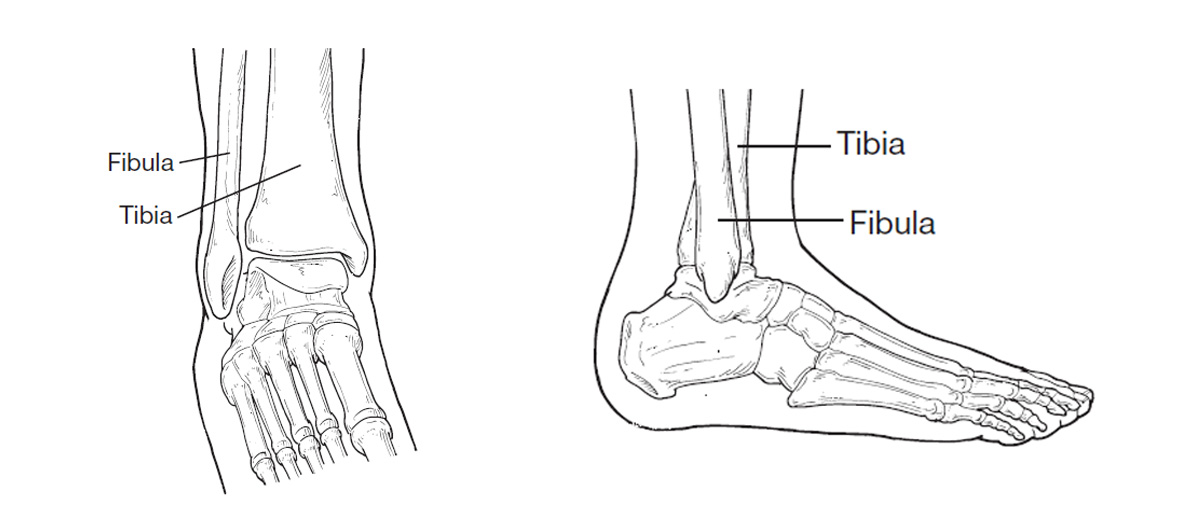ANKLE FRACTURES
What Is an Ankle Fracture?
A fracture is a partial or complete break in a bone. In the ankle, fractures can range from the less serious avulsion injuries (small pieces of bone that have been pulled off) to severe shattering-type breaks of the tibia, fibula, or both. Ankle fractures are common injuries that are most often caused by the ankle rolling inward or outward. Many people mistake an ankle fracture for an ankle sprain, but they are quite different and therefore require an accurate and early diagnosis. They sometimes occur simultaneously.
Signs and Symptoms
An ankle fracture is accompanied by one or all of these signs and symptoms:
- Pain at the site of the fracture, which in some cases can extend from the foot to the knee
- Significant swelling, which may occur along the length of the leg or may be more localized
- Blisters may occur over the fracture site. These should be promptly treated by your surgeon.
- Bruising, which develops soon after the injury
- Inability to walk—however, it is possible to walk with less severe breaks, so never rely on walking as a test of whether a bone has been fractured
- Change in the appearance of the ankle so that it differs from the other ankle
- Bone protruding through the skin—a sign that immediate care is needed! Fractures that pierce the skin require immediate attention because they can lead to severe infection and prolonged recovery.

What to Do
Following an ankle injury it is important to have the ankle evaluated by a foot and ankle surgeon for proper diagnosis and treatment. If you are unable to do so right away, go to the emergency room and then follow up with a foot and ankle surgeon as soon as possible for a more thorough assessment.
Until you are able to be examined by a doctor, the “R.I.C.E.” principle should be followed. This involves:
- Rest. It is crucial to stay off the injured foot, since walking can cause further damage.
- Ice. To reduce swelling and pain, apply a bag of ice over a thin towel to the affected area for 20 minutes of each waking hour. Do not put ice directly against the skin.
- Compression.Wrap the ankle in an elastic bandage or wear a compression stocking to prevent further swelling.
- Elevation. Keep the foot elevated to reduce the swelling. It should be even with or slightly above the hip level.
Diagnosis
The foot and ankle surgeon will examine the affected limb, touching specific areas to evaluate the injury. In addition, the surgeon may order x-rays and other imaging studies, as necessary.
Treatment
Treatment of ankle fractures depends upon the type and severity of the injury.
Options include:
- Immobilization. Certain fractures are treated by protecting and restricting the ankle and foot in a cast or splint. This allows the bone to heal.
- Prescription medications. To help relieve the pain, the surgeon may prescribe pain medications or anti-inflammatory drugs.
- Surgery. For some injuries, surgery is needed to repair the fracture and other related injuries, if present. The foot and ankle surgeon will select the procedure that is appropriate for your injury.
Follow-up Care
It is important to follow your surgeon’s instructions after treatment. Failure to do so can lead to infection, deformity, arthritis, and chronic pain.

This information has been prepared by the Consumer Education Committee of the American College of Foot and Ankle Surgeons, a professional society of 6,000 foot and ankle surgeons. Members of the College are Doctors of Podiatric Medicine who have received additional training through surgical residency programs.
The mission of the College is to promote superior care of foot and ankle surgical patients through education, research and the promotion of the highest professional standards.
Copyright © 2006, American College of Foot and Ankle Surgeons • www.FootPhysicians.com
Contact Us
Office Hours:
Monday - Friday
8:00AM - 5:00PM
Tucson Foot & Ankle Institute:
7406 N. La Cholla Blvd.
Tucson, AZ 85741
Phone: (520) 545-0202
Fax: (520) 545-0201
© Tucson Foot and Ankle Institute. All Rights Reserved. | Privacy Policy

